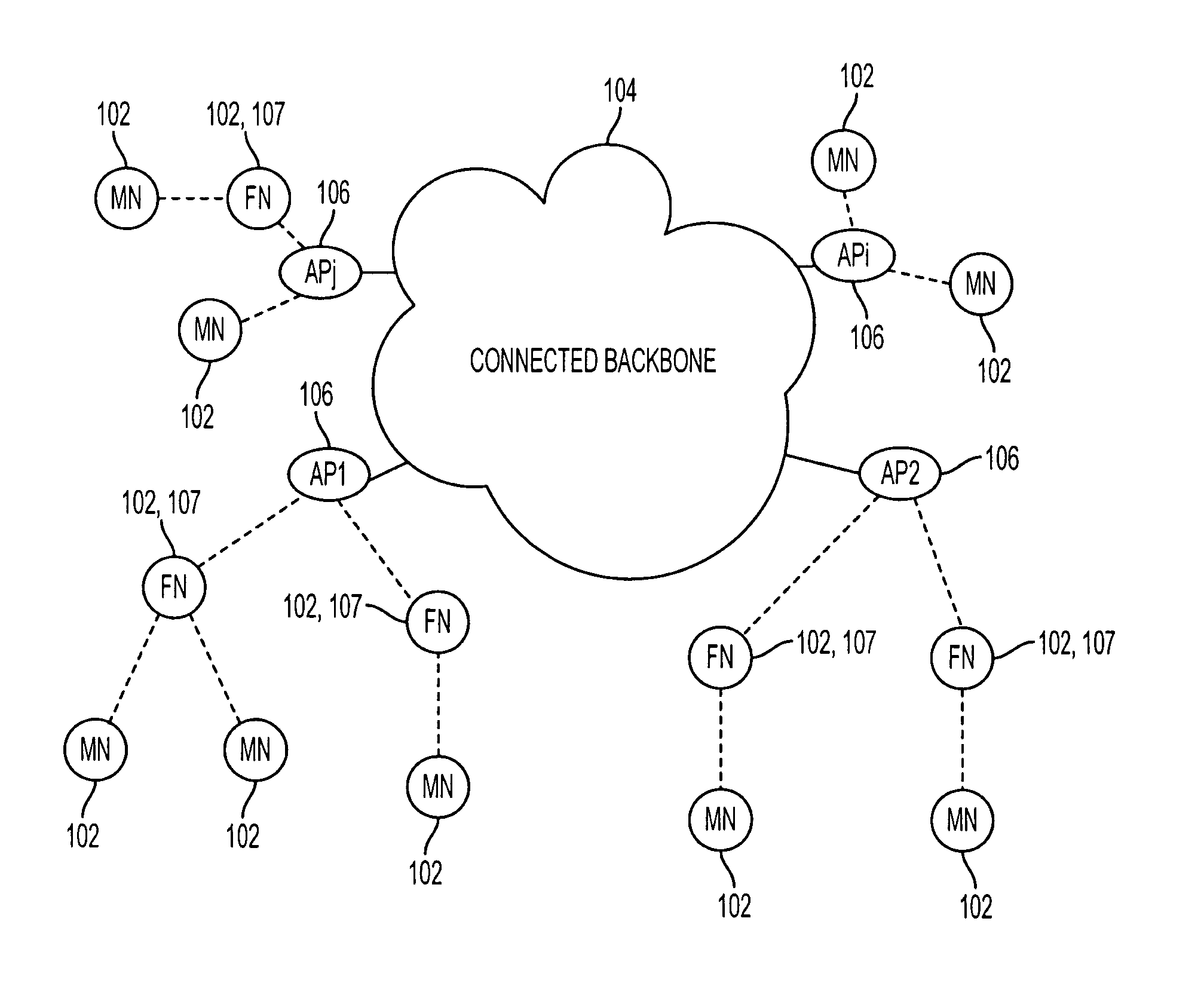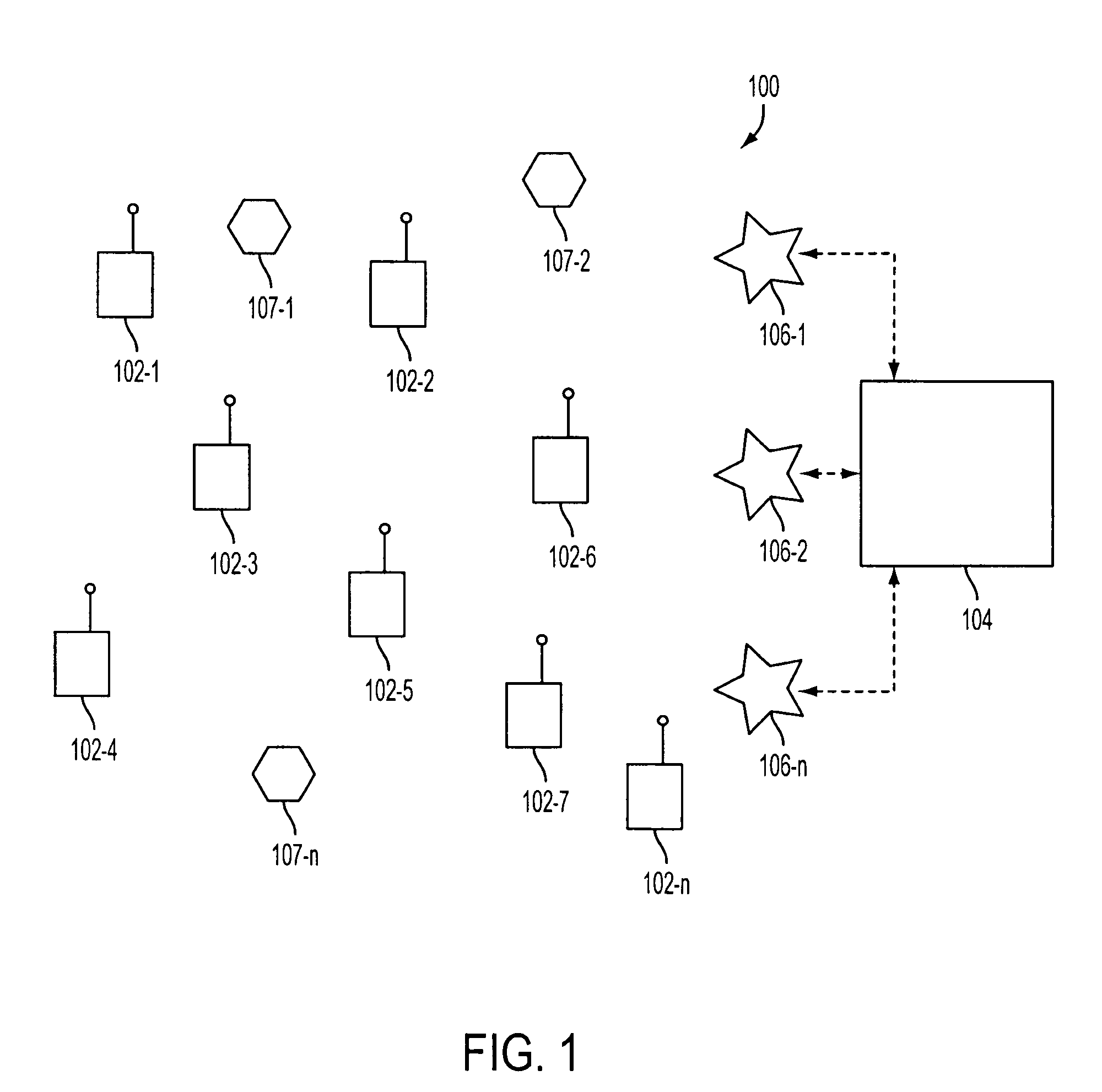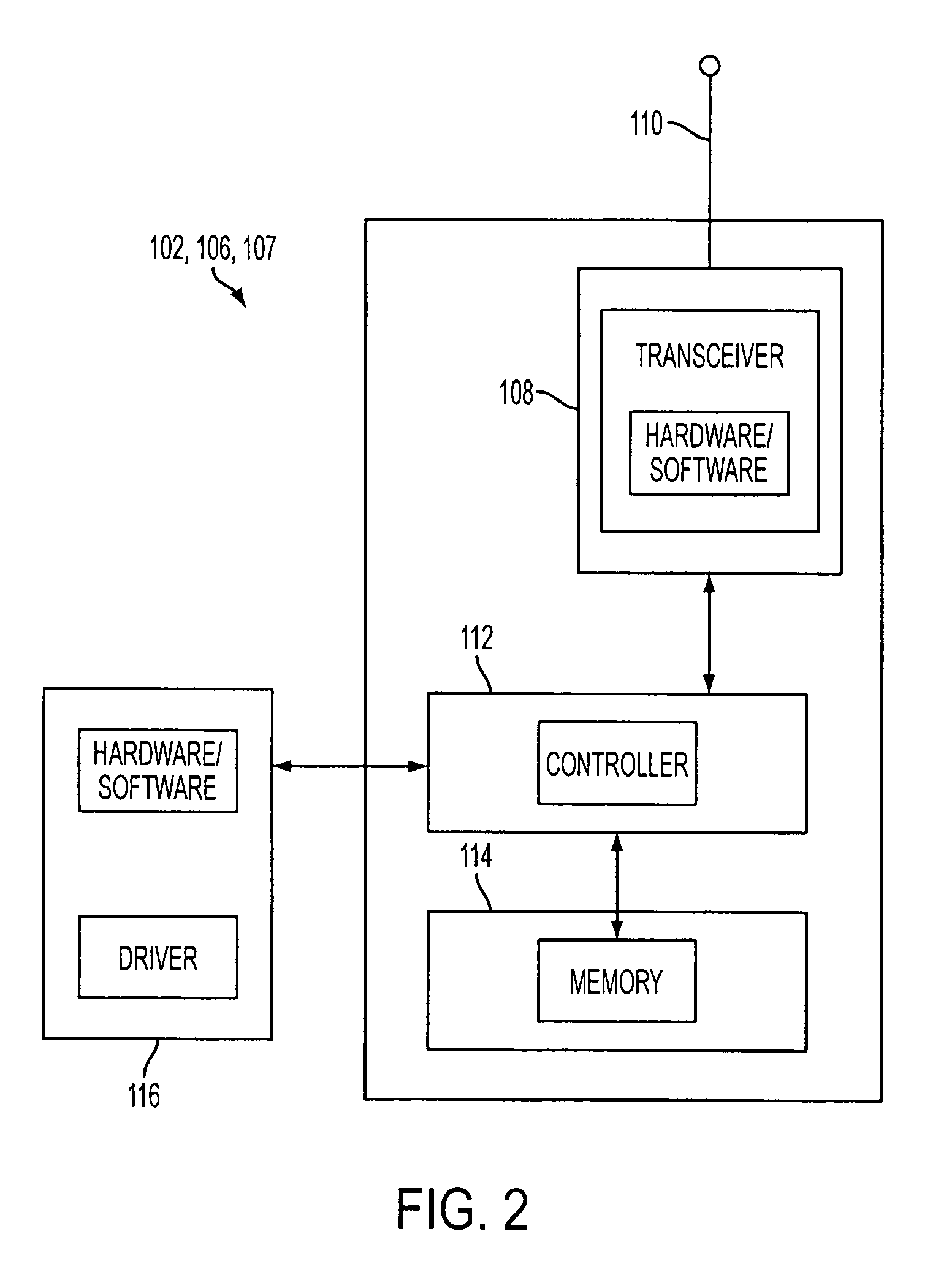System and method to support multicast routing in large scale wireless mesh networks
a wireless mesh network and multicast routing technology, applied in the field of multicast routing algorithms, can solve the problems of not being suitable for infrastructure-based large-scale wireless mesh networks, both algorithms cannot support large-dimensity wireless ad hoc networks with high dynamics, and cannot take into account the high dynamics of mobile networks, so as to reduce the overhead of routing and multicast tree convergence time, reduce the effect of routing overhead and fast topology chang
- Summary
- Abstract
- Description
- Claims
- Application Information
AI Technical Summary
Benefits of technology
Problems solved by technology
Method used
Image
Examples
Embodiment Construction
[0017]FIG. 1 is a block diagram illustrating an example of an ad-hoc packet-switched wireless communications network 100. Specifically, the network 100 includes a plurality of mobile wireless user terminals 102-1 through 102-n (referred to generally as nodes 102 or mobile nodes 102), and includes a fixed network 104 having a plurality of access points 106-1, 106-2, . . . 106-n (referred to generally as nodes 106 or access points 106), for providing nodes 102 with access to the fixed network 104. The fixed network 104 can include, for example, a core local access network (LAN), and a plurality of servers and gateway routers to provide network nodes with access to other networks, such as other ad-hoc networks, the public switched telephone network (PSTN) and the Internet. The network 100 further can include a plurality of fixed routers 107-1 through 107-n (referred to generally as nodes 107 or fixed routers 107) for routing data packets between other nodes 102, 106 or 107. It is noted...
PUM
 Login to View More
Login to View More Abstract
Description
Claims
Application Information
 Login to View More
Login to View More - R&D
- Intellectual Property
- Life Sciences
- Materials
- Tech Scout
- Unparalleled Data Quality
- Higher Quality Content
- 60% Fewer Hallucinations
Browse by: Latest US Patents, China's latest patents, Technical Efficacy Thesaurus, Application Domain, Technology Topic, Popular Technical Reports.
© 2025 PatSnap. All rights reserved.Legal|Privacy policy|Modern Slavery Act Transparency Statement|Sitemap|About US| Contact US: help@patsnap.com



